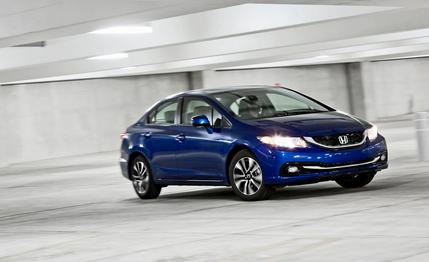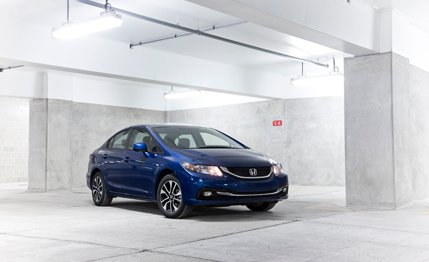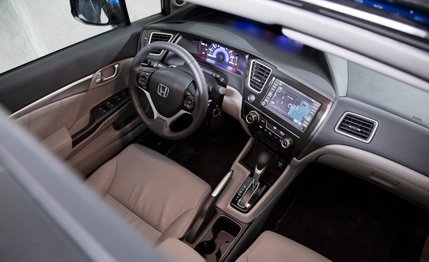 Instrumented Test
Instrumented Test

For one regrettably long decade, the rolling stock of the midwestern United States consisted of Pontiac Grand Ams and Dodge Shadows. Seriously, the place was filthy with them. This seems to prove what we have long believed: A car’s sales success often has a weak correlation to its greatness.
And so, we arrive at the 2012 Honda Civic, which was an undeniable sales success for the company. Honda says it sold 331,872 of the then all-new Civics in 2012, making it the bestselling car in its class that year. We presume that most buyers are perfectly satisfied with their purchases.
And yet, for the long-term health of the model’s and the company’s reputation, Honda has performed a thorough do-over of the Civic for 2013, modifying its look, its interior ambience, its front structure, and its suspension and steering systems.

With new front and rear styling, Honda grafts a shiny smile to the formerly sad, sluglike shape of the four-door Civic. Honda says it’s a more “emotional” and “youthful” design. This, of course, means nothing. But we like the new look just fine.
Honda redid the interior as well, giving it a more conventional look and feel, with a black upper dash, a mildly reworked center stack, some shiny trim, and leather-like graining in place of the strange bacteria-in-a-petri-dish look. The ambience is more upscale. That the car also carries more sound-deadening insulation and thicker glass to block noise helps a great deal. Honda did not reduce the number of small information displays that, at four, seems about 50 percent too many.
With new narrow-offset crash tests looming, Honda beefed up the Civic’s front structure. We did not test the efficacy of this modification. The revised structure adds almost 50 pounds of steel to the front end. That, plus more standard equipment, such as a rearview camera, had our 2013 tester weighing in at 2876 pounds, 125 more than the 2012 Civic sedan we tested. The weight gain hasn’t affected the car’s acceleration times, which remain about a second behind the class-leading Ford Focus. Honda hasn’t made any changes to the powertrain, a weak-kneed 140-hp 1.8-liter four and five-speed auto.

It wasn’t the 2012 Civic’s pokiness that bothered us most, though. It was the soft and numb suspension and steering responses that inspired us to describe it as “alarmingly Lincoln-like.”
We’re delighted to report Honda has starched the suspension with thicker anti-roll bars (up 0.9 inch in front and 0.2 inch at the rear), stiffer springs (plus 15 percent front, 18 percent rear), and retuned dampers. The effect is almost transformative. The ride is now controlled without being harsh, imparting a distinctly less-cheap feeling. The company also quickened the steering ratio by 8 percent (from 16.1:1 to 14.9:1), which makes the Civic feel like the small, light car it is. Unfortunately, Honda has added zero percent additional feedback to the operation of the steering.
But the 2013 Civic is 28 percent closer to the car Honda should have built in the first place. Baby steps, you know.